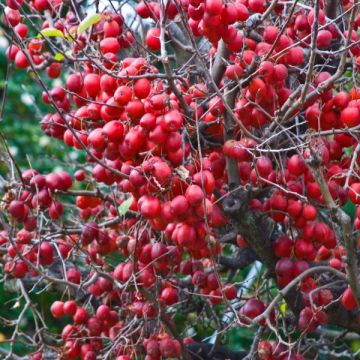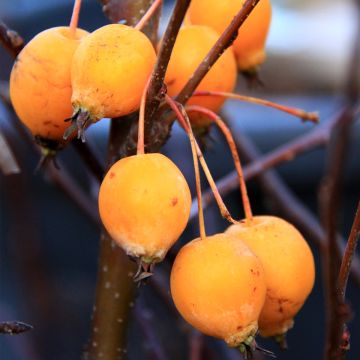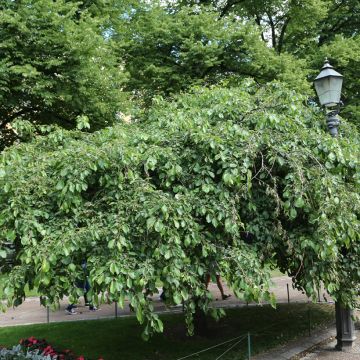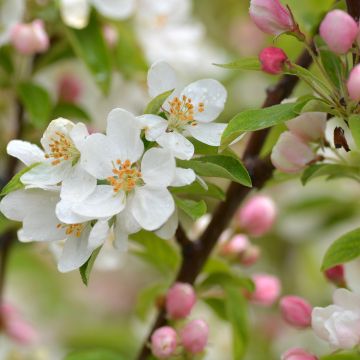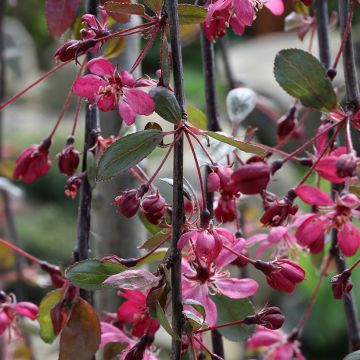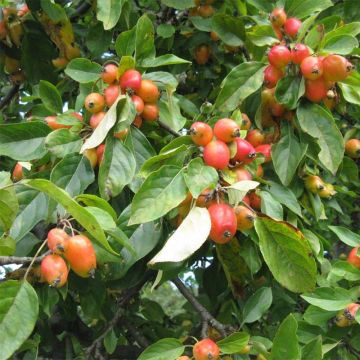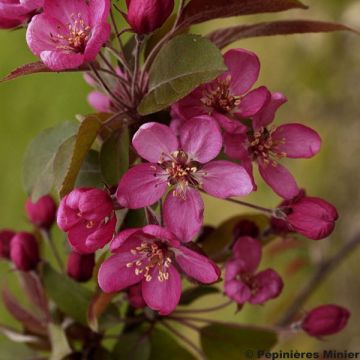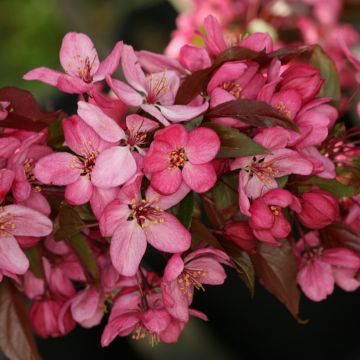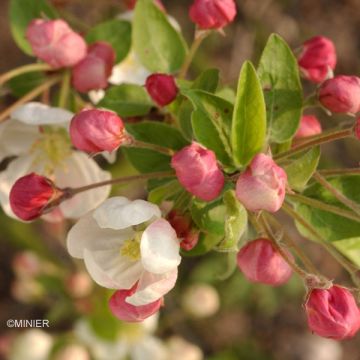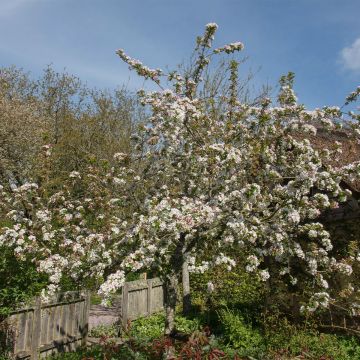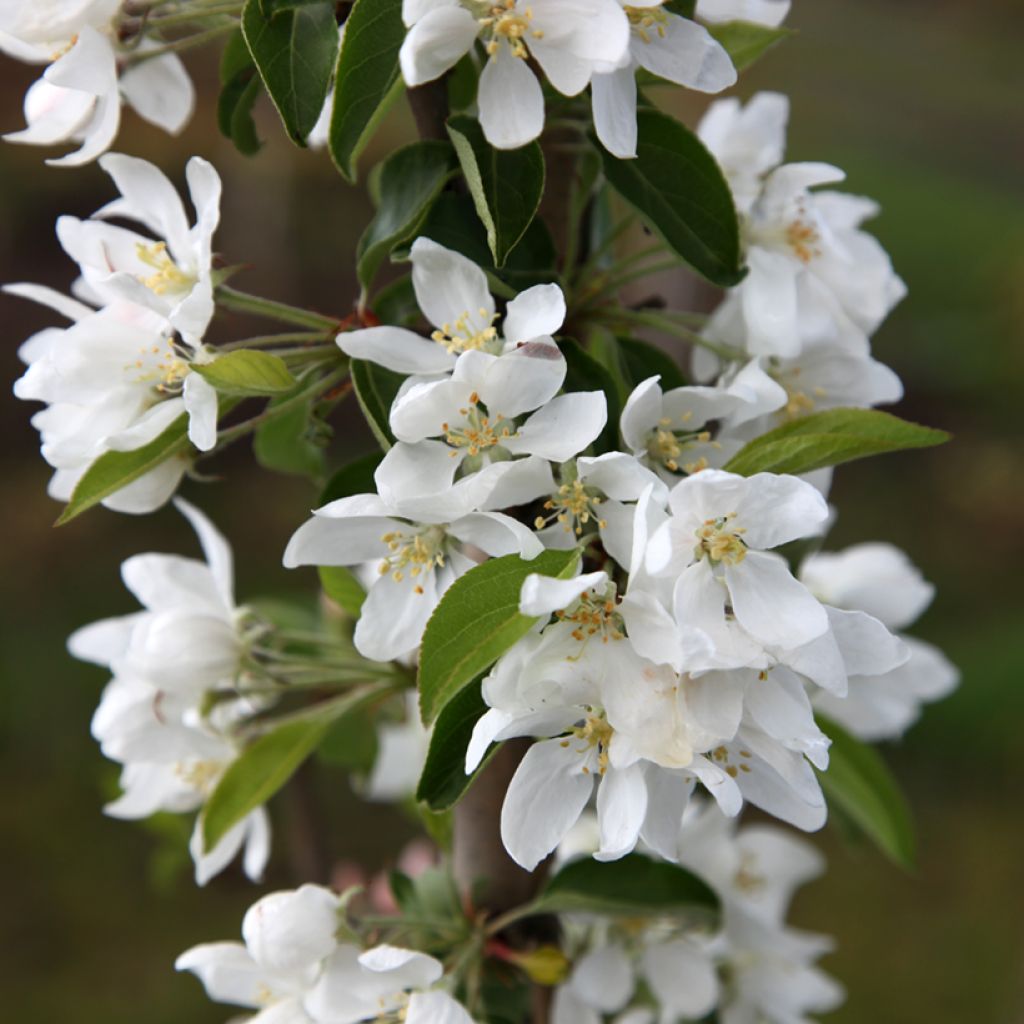

Malus robusta Dolgo - Crabapple
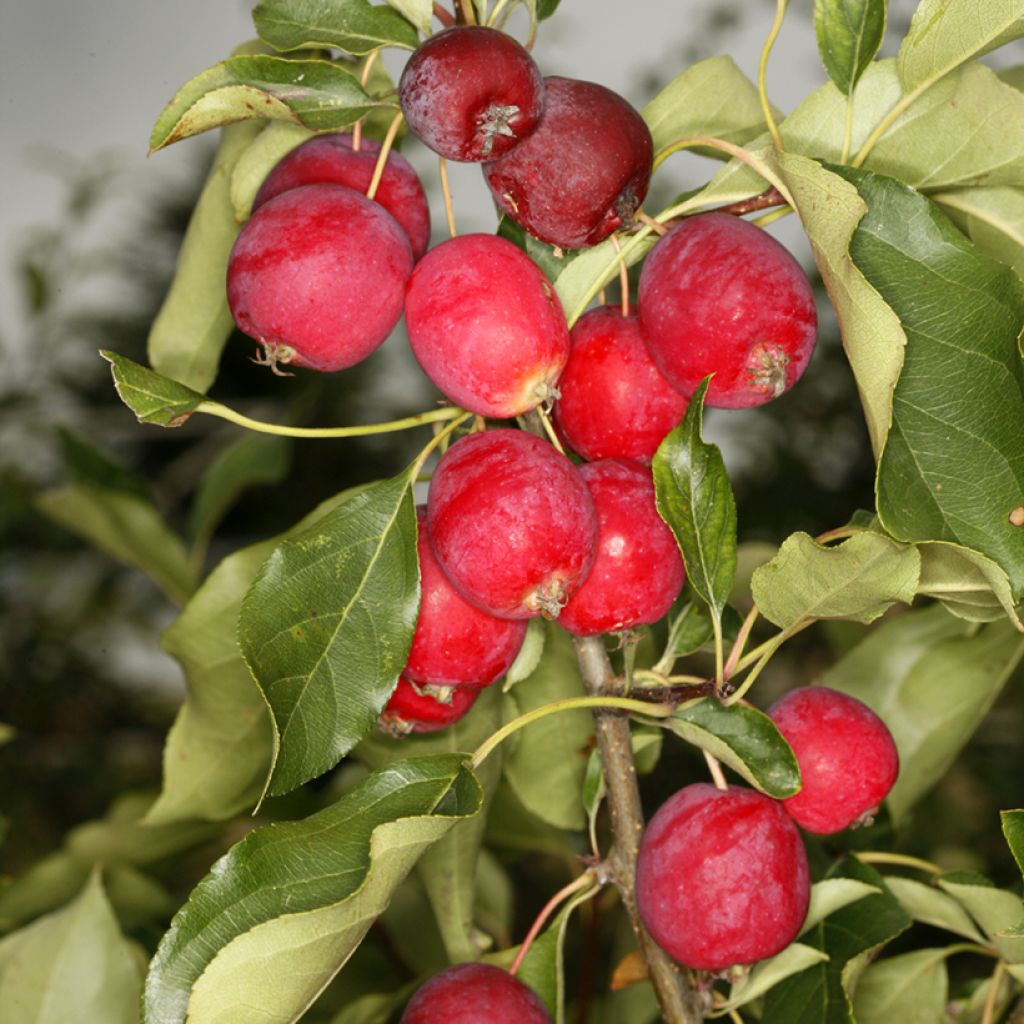

Malus robusta Dolgo - Crabapple
Malus robusta Dolgo - Crabapple
Malus x robusta Pink Glow ('Dolgo')
Crabapple, Robust Apple, Red Sentinel
This item cannot be shipped to the selected country
Oversize package delivery charge from €6.90
More information
Schedule delivery date,
and select date in basket
This plant carries a 24 months recovery warranty
More information
We guarantee the quality of our plants for a full growing cycle, and will replace at our expense any plant that fails to recover under normal climatic and planting conditions.
Oversize package: home delivery by special carrier from €6.90 per order..
Express home delivery from €8.90.
Does this plant fit my garden?
Set up your Plantfit profile →
Description
Malus x robusta 'Dolgo' (also known as 'Pink Glow') is an ornamental Apple tree appreciated for its fragrant flowering and beautiful ruby red, decorative and edible crabapples. In autumn, its foliage takes on beautiful yellow and even orange hues. This tree can be planted as a specimen, in a grove, or in the orchard to pollinate fruit-bearing apple trees. It is a variety known for its disease resistance.
Ornamental Apple trees come from various botanical species of the Malus genus belonging to the Rosaceae family. Hardy, adaptable, and easy to grow, these flowering apple trees thrive in ordinary soil but prefer deep, loose, and moist soil. Once established, they can look after themselves, while maintaining their generous character. Numerous cultivars have emerged in Europe and the United States, becoming increasingly attractive and disease-resistant.
The 'Dolgo' Apple tree comes from seeds of Malus × Robusta collected in 1897 at the Imperial Botanical Gardens in St. Petersburg, Russia, by NE Hansen of the South Dakota Agricultural Experiment Station. This variety was introduced to the horticultural market in 1917. It is a relatively fast-growing tree with a short trunk and a wide, rounded crown, which generally reaches a height of 5m and a spread of 4m, or even more depending on the growing conditions. Its young leaves, which appear just before flowering, are a tender green and darken later. They turn yellow-orange in autumn before falling. In April-May, depending on the region, pale pink flower buds appear, opening into single flowers with a diameter of about 3.5cm, with pure white petals and protruding yellow stamens in the centre. They are fragrant and nectar-rich and attract pollinators. The fruits ripen around October. They are oval and measure approximately 4cm in length and 2-3cm in diameter. Their colour is a beautiful bright red. These fruits fall quite quickly. This 'Dolgo' Malus fruits at the same time as 'John Downie', which is a similar tree in many ways but with better disease resistance.
Malus 'Dolgo' can be planted as a specimen tree on a lawn or integrated into a flowerbed where it will provide structure. Consider its future growth before planting it in the garden. Its natural appearance pairs well with many spring-flowering shrubs such as Amelanchier lamarckii, a Canadian serviceberry, 'Forest Pansy' Redbud, or lilacs, for example.
Report an error about the product description
Plant habit
Flowering
Foliage
Botanical data
Malus
x robusta
Pink Glow ('Dolgo')
Rosaceae
Crabapple, Robust Apple, Red Sentinel
Malus baccata 'Dolgo', Malus baccata 'Pink Glow'
Cultivar or hybrid
Other Malus - Crabapple
Planting and care
Malus 'Dolgo' requires a bright, sunny exposure and high-quality soil that is deep, loose, rich, and well-drained, remaining slightly moist in summer. It tolerates both limestone and slightly acidic soils if they are rich in humus. Dig a large planting hole. If your soil is poor, dig a nice planting pit, add plenty of good quality compost, and apply fertiliser or compost at its base every spring.
After careful planting accompanied by regular watering during the first two years, it will generally manage on its own but may suffer in hot and very dry summers. To allow it to reach its full potential, consider its mature size and give it enough space.
This apple tree is known to be highly resistant to diseases. Use nettle manure to strengthen the foliage's resistance and, in case of an attack, Bordeaux mixture.
Planting period
Intended location
Care
This item has not been reviewed yet - be the first to leave a review about it.
Haven't found what you were looking for?
Hardiness is the lowest winter temperature a plant can endure without suffering serious damage or even dying. However, hardiness is affected by location (a sheltered area, such as a patio), protection (winter cover) and soil type (hardiness is improved by well-drained soil).

Photo Sharing Terms & Conditions
In order to encourage gardeners to interact and share their experiences, Promesse de fleurs offers various media enabling content to be uploaded onto its Site - in particular via the ‘Photo sharing’ module.
The User agrees to refrain from:
- Posting any content that is illegal, prejudicial, insulting, racist, inciteful to hatred, revisionist, contrary to public decency, that infringes on privacy or on the privacy rights of third parties, in particular the publicity rights of persons and goods, intellectual property rights, or the right to privacy.
- Submitting content on behalf of a third party;
- Impersonate the identity of a third party and/or publish any personal information about a third party;
In general, the User undertakes to refrain from any unethical behaviour.
All Content (in particular text, comments, files, images, photos, videos, creative works, etc.), which may be subject to property or intellectual property rights, image or other private rights, shall remain the property of the User, subject to the limited rights granted by the terms of the licence granted by Promesse de fleurs as stated below. Users are at liberty to publish or not to publish such Content on the Site, notably via the ‘Photo Sharing’ facility, and accept that this Content shall be made public and freely accessible, notably on the Internet.
Users further acknowledge, undertake to have ,and guarantee that they hold all necessary rights and permissions to publish such material on the Site, in particular with regard to the legislation in force pertaining to any privacy, property, intellectual property, image, or contractual rights, or rights of any other nature. By publishing such Content on the Site, Users acknowledge accepting full liability as publishers of the Content within the meaning of the law, and grant Promesse de fleurs, free of charge, an inclusive, worldwide licence for the said Content for the entire duration of its publication, including all reproduction, representation, up/downloading, displaying, performing, transmission, and storage rights.
Users also grant permission for their name to be linked to the Content and accept that this link may not always be made available.
By engaging in posting material, Users consent to their Content becoming automatically accessible on the Internet, in particular on other sites and/or blogs and/or web pages of the Promesse de fleurs site, including in particular social pages and the Promesse de fleurs catalogue.
Users may secure the removal of entrusted content free of charge by issuing a simple request via our contact form.
The flowering period indicated on our website applies to countries and regions located in USDA zone 8 (France, the United Kingdom, Ireland, the Netherlands, etc.)
It will vary according to where you live:
- In zones 9 to 10 (Italy, Spain, Greece, etc.), flowering will occur about 2 to 4 weeks earlier.
- In zones 6 to 7 (Germany, Poland, Slovenia, and lower mountainous regions), flowering will be delayed by 2 to 3 weeks.
- In zone 5 (Central Europe, Scandinavia), blooming will be delayed by 3 to 5 weeks.
In temperate climates, pruning of spring-flowering shrubs (forsythia, spireas, etc.) should be done just after flowering.
Pruning of summer-flowering shrubs (Indian Lilac, Perovskia, etc.) can be done in winter or spring.
In cold regions as well as with frost-sensitive plants, avoid pruning too early when severe frosts may still occur.
The planting period indicated on our website applies to countries and regions located in USDA zone 8 (France, United Kingdom, Ireland, Netherlands).
It will vary according to where you live:
- In Mediterranean zones (Marseille, Madrid, Milan, etc.), autumn and winter are the best planting periods.
- In continental zones (Strasbourg, Munich, Vienna, etc.), delay planting by 2 to 3 weeks in spring and bring it forward by 2 to 4 weeks in autumn.
- In mountainous regions (the Alps, Pyrenees, Carpathians, etc.), it is best to plant in late spring (May-June) or late summer (August-September).
The harvesting period indicated on our website applies to countries and regions in USDA zone 8 (France, England, Ireland, the Netherlands).
In colder areas (Scandinavia, Poland, Austria...) fruit and vegetable harvests are likely to be delayed by 3-4 weeks.
In warmer areas (Italy, Spain, Greece, etc.), harvesting will probably take place earlier, depending on weather conditions.
The sowing periods indicated on our website apply to countries and regions within USDA Zone 8 (France, UK, Ireland, Netherlands).
In colder areas (Scandinavia, Poland, Austria...), delay any outdoor sowing by 3-4 weeks, or sow under glass.
In warmer climes (Italy, Spain, Greece, etc.), bring outdoor sowing forward by a few weeks.

































